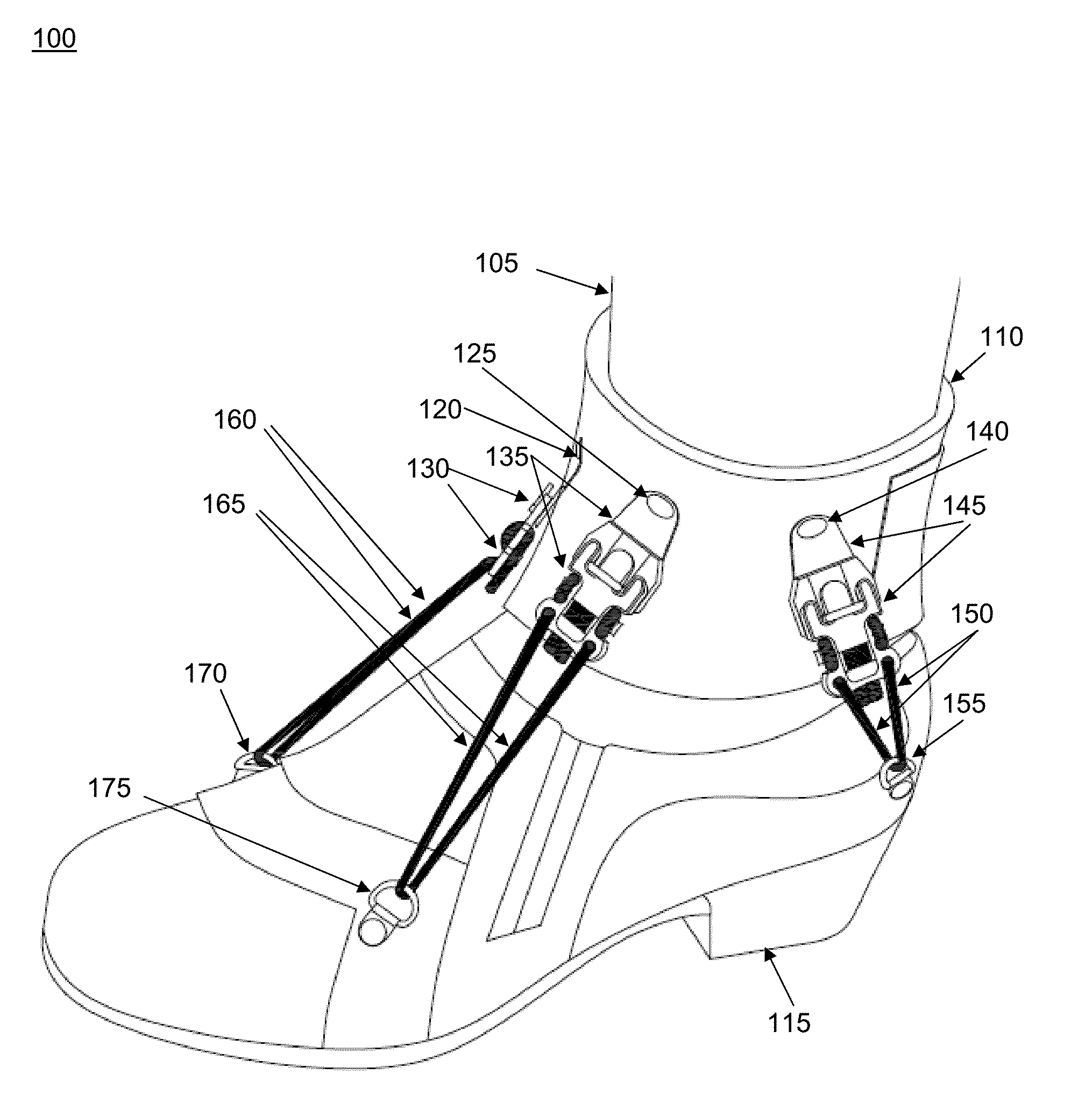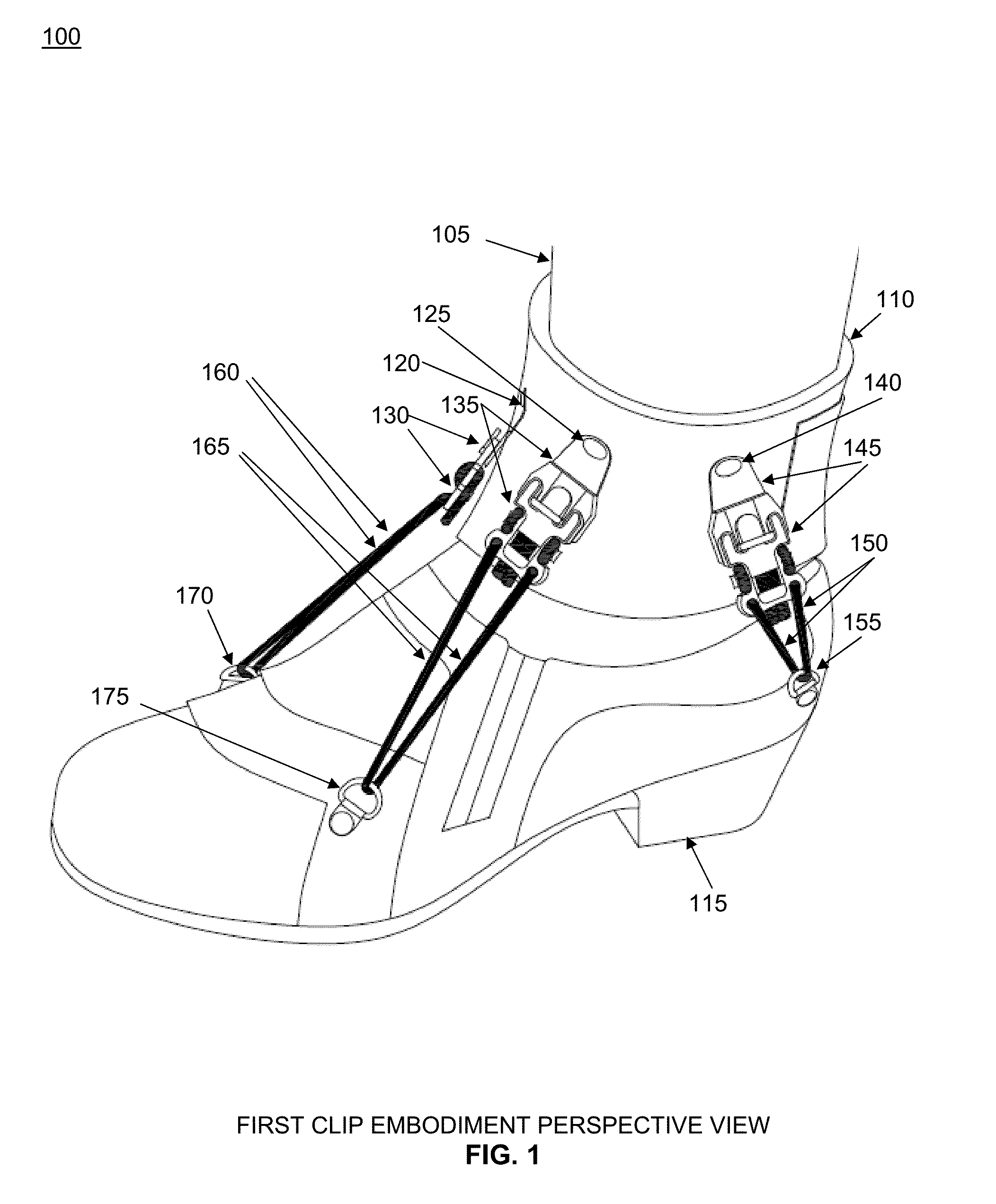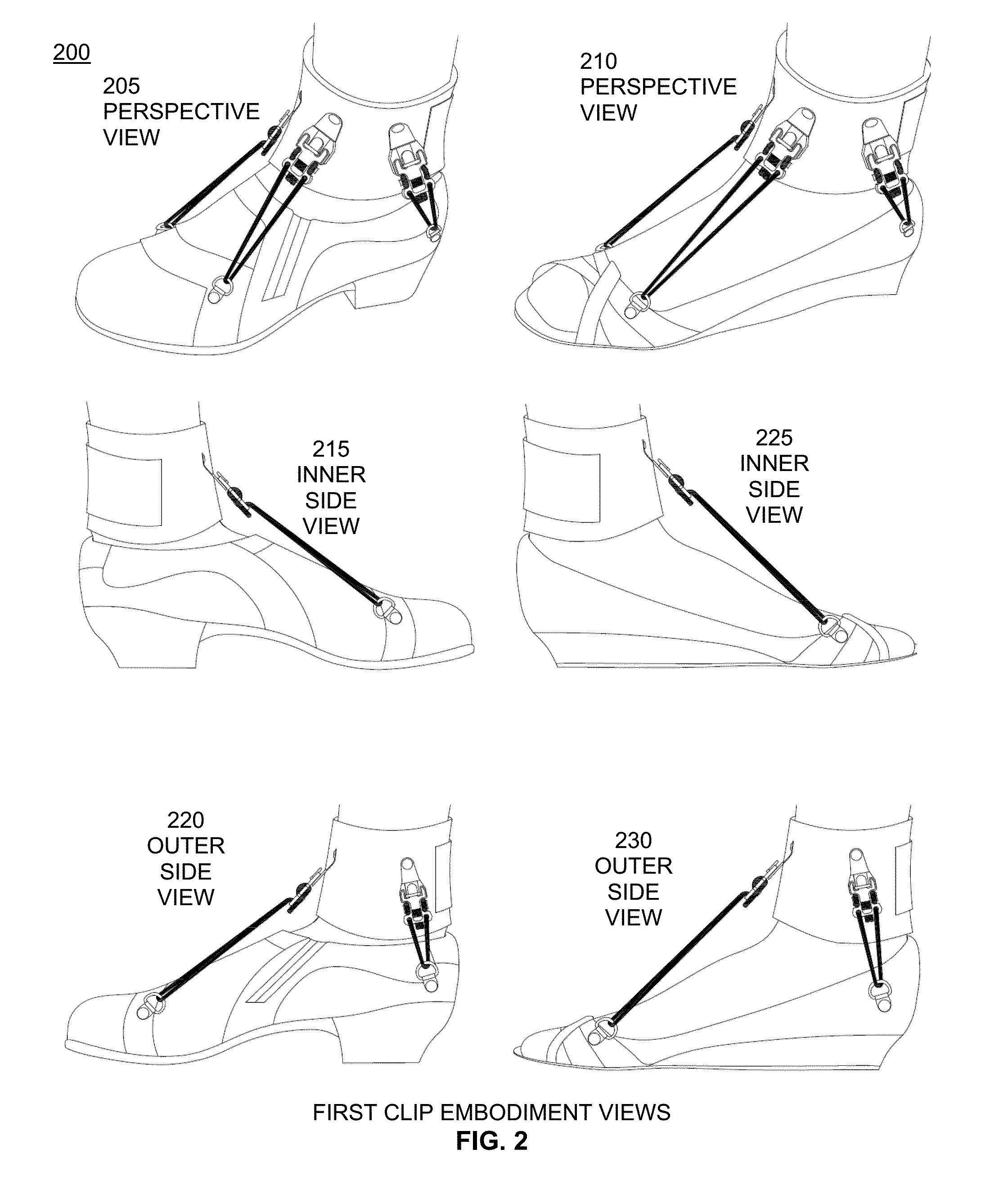Foot drop device
a technology for dropping devices and feet, applied in the field of ankle support, can solve the problems of affecting the function of the foot, reducing mobility, and lack of muscular control to raise the foot back, and achieves the effects of increasing activity, good plantarflexion, and increasing footwear selection
- Summary
- Abstract
- Description
- Claims
- Application Information
AI Technical Summary
Benefits of technology
Problems solved by technology
Method used
Image
Examples
first embodiment
[0057]FIG. 1 shows a perspective view 100 of a first embodiment depicting leg 105; comprising ankle component 110; shoe 115; first front ankle attachment 120; second front ankle attachment 125; first front ankle clip component 130; second front ankle clip component 135; side attachment 140; side clip component 145; side elastic components 150; shoe side attachment located on the quarter area of the footwear 155; first front elastic components 160; second front elastic components 165; first front shoe attachments 170; and second front shoe attachments located on the vamp area of the footwear 175.
[0058]FIG. 2 illustrates views 200 of a first embodiment. Views are first perspective view 205; second perspective view 210; inner side view 215 of first perspective view 205; outer side view 220 of first perspective view 205; inner side view 225 of second perspective view 210; and outer side view 230 of second perspective view 210.
[0059]FIG. 3 illustrates additional views 300 of a first embo...
second embodiment
[0065]FIG. 9 shows a perspective view 900 of a second embodiment utilizing an o-ring and hook attachment depicting leg 905; comprising ankle component 910; shoe 915; first front ankle attachment 920; second front ankle attachment 925; first front ankle clip component 930; second front ankle clip component 935; side attachment 940; side clip component 945; side elastic components 950; first shoe side attachment showing an embodiment where holes are punched directly into the shoe disregarding the need for a D-ring 955; first front elastic component 960; second front elastic component 965; first front shoe attachments showing an embodiment utilizing the existing eyeholes in the sneakers 970; and second front shoe attachments utilizing the existing eyeholes in the sneaker 975.
[0066]FIG. 10 illustrates views 1000 of a second embodiment. Views are outer side view 1005; and inner side view 1010.
[0067]FIG. 11 illustrates views 1100 of a second embodiment. Views are perspective view 1105; ou...
third embodiment
[0071]FIG. 15 is a perspective view 1500 of a third embodiment depicting D-ring detail.
[0072]FIG. 16 is a detail scale view 1600 of cord connector clip components for embodiments. Four views include first embodiment side view A, first embodiment front view B, first embodiment back view C (with buckle D attached), and cord connector buckle button attachment D. Each clip includes two apertures 1605. Rear clips 1610 (for extra elastic length for adjusting) are on the back side of view B. They are shown in this view for placement information. Rear clips 1610 hold excess elastic. Push button 1615 is shown in view B. Back view C depicts button attachment D affixed 1620. Opening 1625 for attachment to brace and opening 1630 for button are shown in view D. Interior and exterior edges are rounded. For embodiments, the button is sized for a thumb to press. In embodiments, clip notches 1635 are large enough to hold two ⅛ inch diameter elastics securely.
[0073]FIG. 17 is a detail view 1700 of an...
PUM
 Login to View More
Login to View More Abstract
Description
Claims
Application Information
 Login to View More
Login to View More - R&D
- Intellectual Property
- Life Sciences
- Materials
- Tech Scout
- Unparalleled Data Quality
- Higher Quality Content
- 60% Fewer Hallucinations
Browse by: Latest US Patents, China's latest patents, Technical Efficacy Thesaurus, Application Domain, Technology Topic, Popular Technical Reports.
© 2025 PatSnap. All rights reserved.Legal|Privacy policy|Modern Slavery Act Transparency Statement|Sitemap|About US| Contact US: help@patsnap.com



